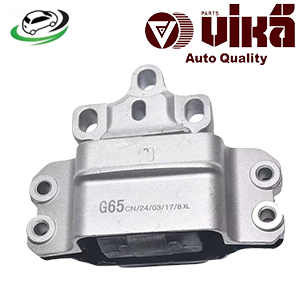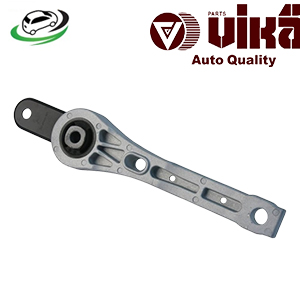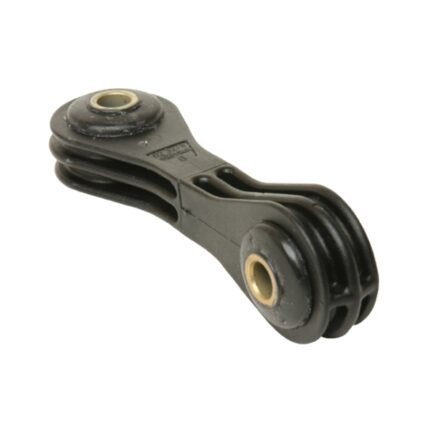Get VW Jetta IV GLI Sway Bar End Link 1J0411315K in Kenya
The sway bar end link is a vital component of a vehicle’s suspension system, contributing significantly to handling, stability, and overall driving safety. It connects the sway bar (also known as the anti-roll bar) to the suspension, helping to control body roll during cornering and improve ride quality. This guide explores the functionality, types, symptoms of failure, and maintenance of sway bar end links.
Functionality of the Sway Bar End Link
Sway bar end links serve several important functions in a vehicle’s suspension system:
- Connect Sway Bar to Suspension: The primary role of the sway bar end link is to connect the sway bar to the suspension components, usually the control arms or strut assembly.
- Reduce Body Roll: By linking the sway bar to the suspension, the end links help the sway bar reduce body roll during cornering, improving vehicle stability and handling.
- Distribute Forces: The end links distribute forces evenly across the suspension, ensuring that both sides of the vehicle work together to maintain balance.
- Enhance Ride Comfort: Proper functioning of the sway bar and end links contributes to a smoother ride by minimizing excessive body movement.
Components of a Sway Bar End Link
A typical sway bar end link consists of the following components:
- Ball Joints: These are spherical joints that allow for movement in multiple directions, providing flexibility and ensuring the link can accommodate the suspension’s motion.
- Bushings: Rubber or polyurethane bushings absorb vibrations and reduce noise, providing a smoother and quieter ride.
- Bolts and Nuts: These fasteners secure the end link to the sway bar and the suspension components.
- Rod or Shaft: The rod or shaft connects the ball joints or bushings, forming the body of the end link.
Types of Sway Bar End Links
Sway bar end links come in various types, each suited to different vehicle requirements and performance needs:
- Standard End Links: These are the most common type, typically featuring a rod with ball joints or bushings at each end. They provide adequate performance for everyday driving conditions.
- Adjustable End Links: These links allow for length adjustments, making them ideal for vehicles with modified suspension systems. They enable precise tuning of the sway bar’s effectiveness.
- Heavy-Duty End Links: Designed for high-performance and off-road applications, these links are made from stronger materials and feature reinforced components to withstand increased stresses.
- Quick-Disconnect End Links: Often used in off-road vehicles, these links can be quickly disconnected to allow for greater suspension articulation when needed.
Symptoms of a Failing Sway Bar End Link
Recognizing the signs of a failing sway bar end link is essential for maintaining vehicle stability and safety:
- Clunking or Rattling Noise: One of the most common symptoms is a clunking or rattling noise coming from the suspension, especially when driving over bumps or rough roads. This noise indicates that the end link may be loose or worn out.
- Poor Handling: A failing end link can lead to poor handling, with the vehicle feeling less stable during cornering and more prone to body roll.
- Uneven Tire Wear: If the sway bar end link is not functioning properly, it can cause uneven tire wear due to the increased stress on the suspension components.
- Visible Damage: Inspecting the end links for visible damage, such as cracked or torn bushings, loose bolts, or bent rods, can also indicate the need for replacement.
Causes of Sway Bar End Link Failure
Several factors can contribute to the failure of sway bar end links:
- Wear and Tear: Over time, the constant movement and stress on the end links can cause the ball joints and bushings to wear out.
- Harsh Driving Conditions: Driving on rough roads, hitting potholes, or off-roading can accelerate the wear and tear on the end links.
- Corrosion: Exposure to moisture, salt, and other corrosive elements can cause the metal components of the end links to rust and weaken.
- Improper Installation: Incorrect installation or over-tightening of the end links can lead to premature failure.
Maintenance and Replacement
Maintaining sway bar end links involves regular inspections and timely replacements to ensure optimal vehicle performance and safety:
- Regular Inspections: Periodically check the end links for signs of wear, damage, or corrosion. This can be done during routine vehicle maintenance or when other suspension components are being serviced.
- Listen for Noises: Pay attention to any unusual noises coming from the suspension, such as clunking or rattling sounds, which can indicate a problem with the end links.
- Replace as Needed: If any symptoms of a failing sway bar end link are observed, replace the end links promptly to prevent further damage to the suspension and maintain vehicle stability.
Replacement Process
Replacing a sway bar end link typically involves the following steps:
- Prepare the Vehicle: Park the vehicle on a level surface and lift it securely using a jack and jack stands. Ensure the suspension is properly supported.
- Locate the End Links: Identify the location of the sway bar end links. They are usually located at each end of the sway bar, connecting it to the suspension components.
- Remove the Old End Links: Using the appropriate tools, remove the bolts and nuts securing the end link to the sway bar and suspension. Carefully remove the old end link.
- Install the New End Links: Position the new end link and secure it to the sway bar and suspension components using the provided bolts and nuts. Ensure the end link is properly aligned and tightened to the manufacturer’s specifications.
- Lower the Vehicle: Carefully lower the vehicle and remove the jack stands.
- Test the Vehicle: Take the vehicle for a test drive to ensure there are no unusual noises and that the handling has improved.
Importance of Quality End Links
Using high-quality sway bar end links is essential for several reasons:
- Performance: Quality end links ensure effective reduction of body roll and improved handling, contributing to a safer and more comfortable ride.
- Durability: High-quality materials and construction enhance the end link’s longevity, reducing the frequency of replacements.
- Reliability: Reliable end links maintain proper alignment of the sway bar, ensuring consistent performance under various driving conditions.
- Cost-Effectiveness: Investing in quality end links can prevent frequent replacements and associated labor costs.
Follow us on Facebook for more parts.




